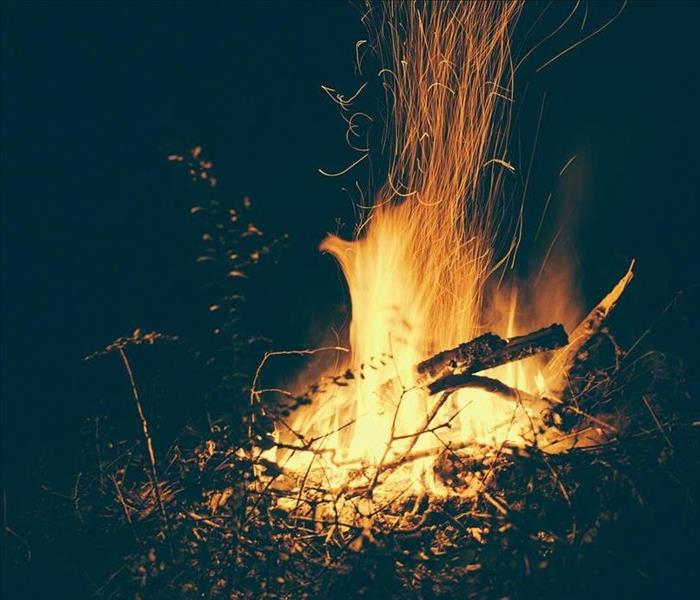Planning a Bonfire This Fall? Check Out These Tips First.
10/8/2020 (Permalink)
Relaxing around a fire pit during a chilly fall night is one of the best ways to end a barbeque, a night of camping, or get together. Whether you are in the comfort of your backyard or relaxing at a campsite, these firepit safety tips can help keep you and your friends stay safe this fall.
- Choose the right location: First, find a level and open area to have your fire. Your fire pit needs to be at least ten feet from structures or items that can catch fire.
- Pick the right fuel: If you're looking to enjoy an authentic fire accompanied by cracking and popping sounds, then a wood-burning fire is the best choice. For a quick lighting option, opt for a gas or propane pit. However, if you cant make your mind up, many store-bought fire pits allow you to switch between wood and gas.
- Use the right wood: Always burn seasoned hardwoods. Materials like plywood can release toxic fumes, while softwoods can spark and pop excessively. Only use woods that fit entirely in your fire pit and do not stick out.
- Don't use fuel accelerants: Using fire accelerants can be extremely dangerous. Fire starters can release toxic fumes, start an explosion, or cause your fire to grow too rapidly.
- Add a screen: Using a fire pit screen is the best way to protect yourself and guests from embers and sparks that could ignite clothing or other materials. Choose a screen that has a heat resistant metal like steel or cast iron.
- Check the weather and burn status: Wind can cause your fire to spread rapidly. If pollution levels are high, your local government may issue a burn ban to limit particulate matter and keep carbon dioxide levels down. Check both of these things before starting a fire.
- Be smart around a fire: Avoid wearing flowy clothing or drinking excessively when around a fire pit. Always have an adult present if children are around the fire pit.
- Extinguish the fire correctly: Make sure your fire is completely out by drowning the fire pit in water and then mixing the ashes and ember with the soil. Scrape partially burned logs to ensure the hot embers are off of them. Then, stir the embers to make sure everything is wet.


 24/7 Emergency Service
24/7 Emergency Service
